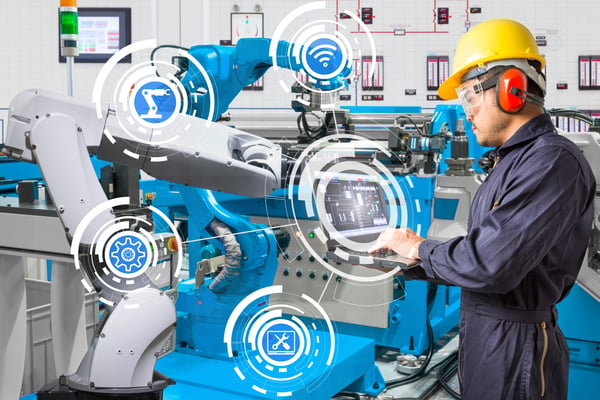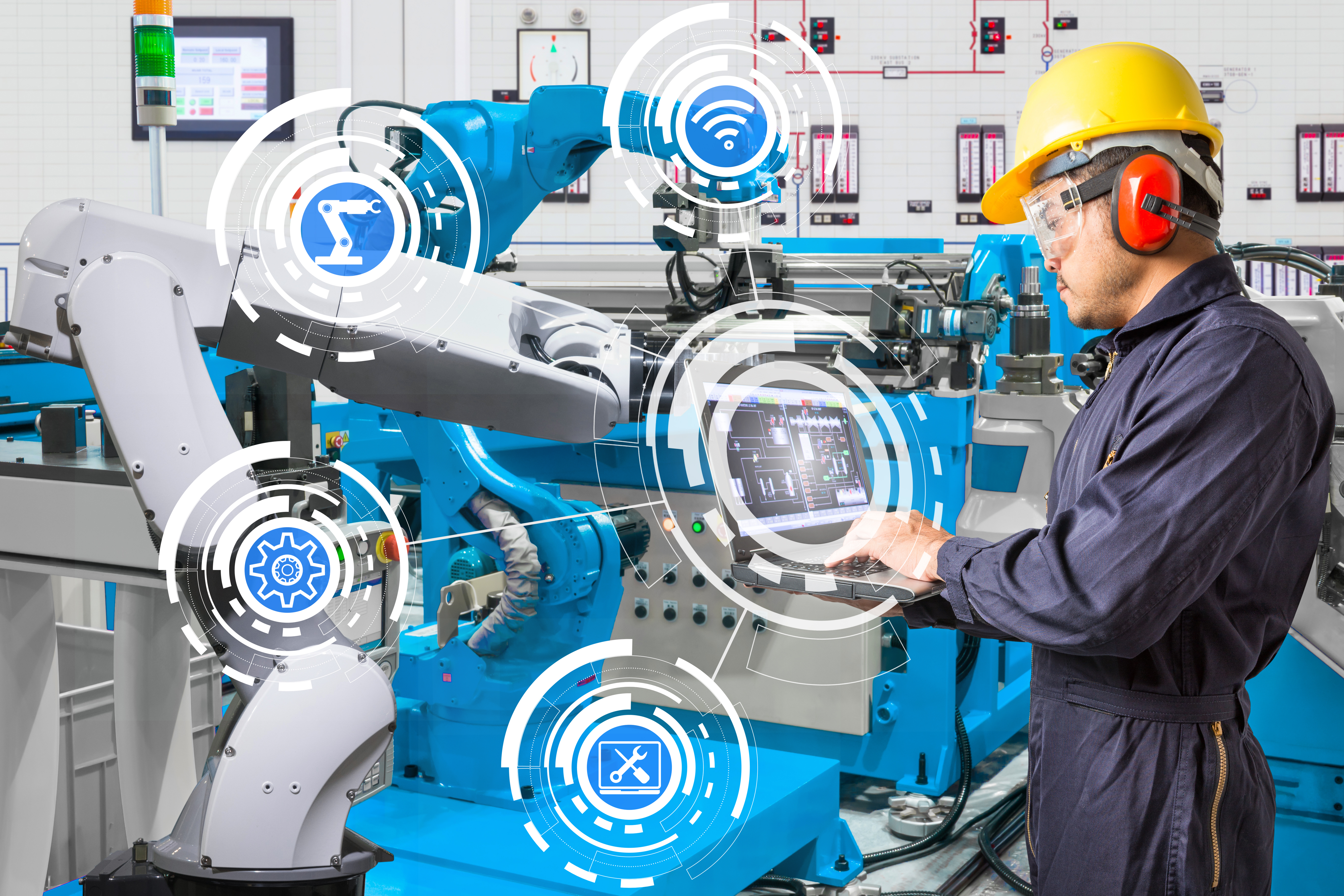Author
 Simon Knibbs
Simon has been working at EPLAN UK for 3 years as an EPLAN Applications Engineer. He started his career in building, services, and moved on to designing and programming early robotics. He then became involved in mechatronic design and PCB layout. Since joining the CAD industry he has always been at the forefront assisting customers. He is a great advocate of value for money and hates to see customers’ investments underutilised through lack of knowledge, configuration skills or investment. He is a firm believer that a consultant’s role is to aid the customer in doing things better, easier and faster. So automation, standardisation and integration into other workflows are his interests.
Knibbs.S@eplan.co.uk
Simon Knibbs auf LinkedIn
Simon Knibbs
Simon has been working at EPLAN UK for 3 years as an EPLAN Applications Engineer. He started his career in building, services, and moved on to designing and programming early robotics. He then became involved in mechatronic design and PCB layout. Since joining the CAD industry he has always been at the forefront assisting customers. He is a great advocate of value for money and hates to see customers’ investments underutilised through lack of knowledge, configuration skills or investment. He is a firm believer that a consultant’s role is to aid the customer in doing things better, easier and faster. So automation, standardisation and integration into other workflows are his interests.
Knibbs.S@eplan.co.uk
Simon Knibbs auf LinkedIn
Rise of the Machines
Internet of Things (IoT) and its cousin, Industry 4.0, are no longer a novelty in industrial environments. Forward-thinking organisations have decided to take the leap from semi-automated production to automated lines and smart factories. But today’s smart factories require more than just the enabling technologies of wireless connectivity and Ethernet protocols.
M2M, or machine-to-machine communication, provides opportunities for even more advanced factory management and, thanks to Open Platform Communication Unified Architecture (OPC UA) the number of intelligent machines is on the rise. Should manufacturers fear this new ‘rise of the machines’ or embrace it?
According to a report from the McKinsey Global Institute in the US, the future connection of billions of ordinary devices to the Internet will add between $2.7 trillion and $6.2 trillion a year to the global economy by 2025. And General Electric estimates that the Industrial Internet will boost global GDP by $15.3 trillion in 2030.

To put it simply, it is believed that at the moment IoT connects in excess of 50 billion devices, with the economic value of industrial IoT (and M2M specifically) being worth as much as the entire US economy!
Supporting and encouraging the spread of M2M connectivity is OPC Unified Architecture (OPC UA), an industrial M2M communication protocol for interoperability developed by the OPC Foundation. OPC UA builds on the success of Open Platform Communications (OPC), which was developed to abstract Modbus and Profibus-type protocols into a standardised interface that allowed HMI/SCADA systems to interface with a “middle-man”. Here generic-OPC transformed the read/write requests into device-specific requests and vice-versa.
Initially, the OPC standard was restricted to the Windows operating system. As a result, the acronym OPC was born from OLE (object linking and embedding) for Process Control. These specifications, which are now known as OPC Classic, have enjoyed widespread adoption across multiple industries, including manufacturing, building automation, oil and gas, renewable energy and utilities.
With the introduction of service-oriented architectures in manufacturing systems came new challenges in security and data modelling. The OPC Foundation developed the OPC UA specifications to address these needs and at the same time provided a feature-rich technology open-platform architecture that was future-proof, scalable and extensible.
OPC UA acts as a bridge to access process and device data from EPLAN software and to feedback into EPLAN software. This enables engineers to add ‘predictive maintenance’ and ‘remote maintenance’ to the list of services provided. In other words, Internet of Things and EPLAN software can ensure that devices are protected against failure and are flagged for repair when a future failure is found to be likely. This could save millions for manufacturers in costly maintenance and repairs, as well as downtime and lost production.

For instance, if a component has reached the end of its expected lifecycle in hours or operations, OPC UA will notify site engineers via email and send information about the device using the EPLAN Project and associated documentation.
But such technology is not limited to only plant hardware and components. In the future, IoT will make service and support available automatically, right from the time the product is purchased. The product itself will initiate service requests with no need for the owner to inquire about and arrange servicing with the manufacturers.
This immense benefit is made possible thanks to embedded service capabilities that gather information and send it directly to the servicing team, which can work out a solution for fixing problems. Under these circumstances, servicing and maintenance become more proactive, better targeted and much more cost effective.
Another application of IoT and M2M is to use wireless technology to monitor systems (both in business and domestic environments), such as utility meters. This will allow the owner of the meter to know if certain elements have been tampered with, which serves as a qualitative method to stop fraud. In Canada for instance, there is a central system with up to 600 Smart Meter collectors, which aggregates data relayed from the province's 3.8 million Smart Meters.
A third application for this technology is to use wireless networks to update digital billboards. This allows advertisers to display different messages based on time of day or day-of-week, and allows quick global changes for messages, such as pricing changes for petrol, real-time traffic updates, disruption caused by accidents, roadworks or meteorological conditions.

The industrial M2M market is undergoing a fast transformation as enterprises are increasingly realising the value of connecting geographically dispersed production plants, devices, sensors and machines to corporate networks.
Industry sectors such as oil and gas, manufacturing, military, government, smart cities, public utilities use M2M technologies for a myriad of applications. Many companies have enabled complex and efficient data networking technologies to provide capabilities such as high-speed data, mobile mesh networking and 3G/4G mobile phone technologies.
But most importantly, as manufacturers evolve to service providers, they must understand the strategic importance of business ecosystems, whereby organisations need to work together for better profit margins. Whether it is different departments within the same company or sites located on opposite sides of the Earth, M2M allows users to contribute to the same data libraries and communicate during the production process for greater efficiencies.
IoT postulates that a physical device with added IT components is greater than the sum of its parts. This means that in the case of M2M, it is not the inherent value of disparate machines and applications that is the most important. Companies like EPLAN, understanding the benefits of M2M, add much more value to hardware by creating connections that, until recently, were only achievable through human or user intervention.
Would you like to find out how EPLAN can support you with IoT and M2M technology?



Comments